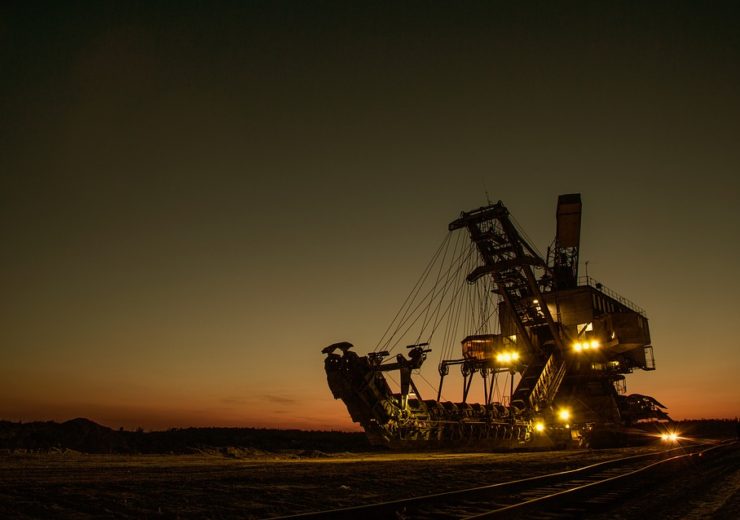2019 Bathurst drilling campaign underway to complete up to 5,000m at the Nash Creek and Superjack projects

Callinex commences drilling campaign in the Bathurst mining district of New Brunswick. Photo: courtesy of Khusen Rustamov from Pixabay.
Callinex Mines Inc. (the “Company” or “Callinex”) (TSXV: CNX) (OTC: CLLXF) is pleased to announce that it has commenced its 2019 Bathurst drilling campaign (the “Campaign”) to complete up to 5,000m at the Nash Creek and Superjack Volcanogenic Massive Sulphide (“VMS”) projects located in the Bathurst Mining District of northern New Brunswick. The Campaign at the Nash Creek Project is underway with one drill rig and plans to mobilize the rig to Superjack shortly after. The Company anticipates 15 to 20 drill holes will be completed at the Nash Creek Project, totaling 3,000 to 4,000m, and two drill holes at the Superjack Project, totaling 500 to 1,000m.
Max Porterfield, President and CEO, stated, “We are excited to test these newly generated targets at Nash Creek to show the district-scale potential of the Project. Additionally, we are eager to follow up on the high-grade zone discovered during our most recent exploration campaign at the Superjack Project. Making discoveries at both projects holds the potential to enhance the economics from the maiden Preliminary Economic Assessment published last year.”
Earlier this year, Callinex identified 14 target areas from its 156-line-km district-scale induced polarization (“IP”) survey that the Company will be drill testing during this exploration campaign (See Figure 2). In addition, the Company will be testing three target areas that were identified from a review of a regional 2006 airborne Versatile Time Domain Electromagnetic (“VTEM”) geophysical survey and confirmed through additional ground work (See Figure 3).
The Nash Creek Deposit consists of three near horizontal sulphide-rich lenses which have been defined over 2.1 km and hosted in an altered felsic-mafic volcanic sequence. Callinex’s exploration success, to date, has utilized a historical 2011 IP survey completed by previous operators. Recognizing the regional felsic-mafic sequence which hosts the three deposits extends an additional 20m south, Callinex recently completed an additional 156-line km IP survey to cover the area of interest. The Nash Creek Deposit IP signature is a lower resistivity coincident with an increase in chargeability relative to background.
The majority of priority targets identified during the recently completed IP survey that are being drill tested exhibit a low resistivity anomaly coincident with increased chargeability and are located along the favourable geological contact between mafic and felsic volcanic rock units. Additionally, a number of the targets are supported by historic mineral occurrences with surface sampling recording values of up to 5.5% Cu, 9.1% Zn and 10.3% Pb.
A total of six anomalies were identified after reviewing a historic regional 367-line-km airborne VTEM geophysical survey in the Nash Creek Area, completed in 2006 by Slam Exploration Ltd. Follow up work by Callinex’s technical team on the identified VTEM targets, which consisted of further ground electromagnetic and IP geophysical surveys, resulted in three target areas which warrant diamond drilling follow up.
Additionally, at the Superjack Project, Callinex plans to follow up on the newly discovered “D” zone where drill hole SJ17-88 intersected 1.9m of massive sulphides, grading 8.0% zinc equivalent (“Zn Eq.”) mineralization (6.1% Zn, 1.0% Pb, 0.1% Cu and 35 g/t Ag) and approximately 100m vertically above SJ17-88, drill hole SJ17-90 intersected 2.7m of massive sulphides, grading 6.2% Zn Eq. (4.4% Zn, 0.9% Pb, 0.3% Cu and 18 g/t Ag) at a down-hole depth of 40.4m.
The Company plans on drilling two holes totalling approximately 1,000m to test electromagnetic and magnetic geophysical anomalies coincident with Pb in soil anomalies (See Figure 4). These drill targets are located immediately east-northeast of the “D” zone. The newly interpreted “D” zone horizon is located between the previously discovered A,B, & C zones and remains untested along strike and depth.
Source: Company Press Release
